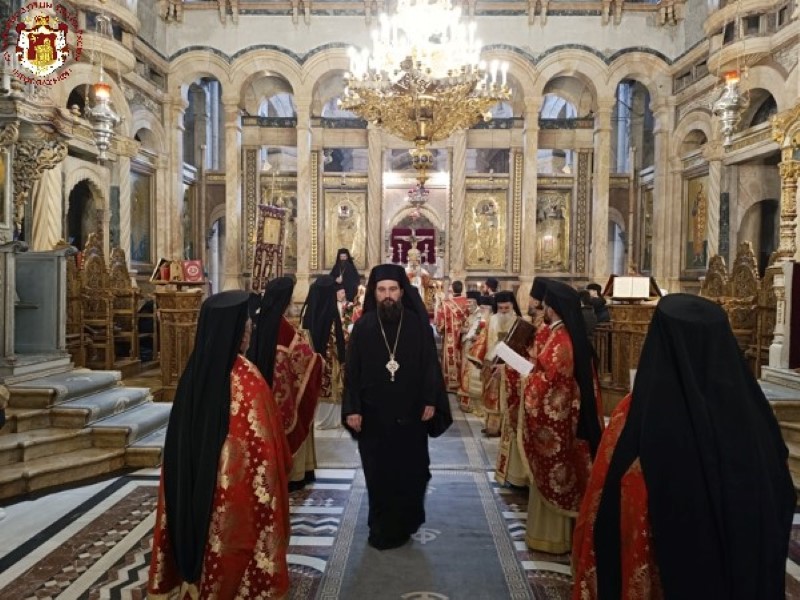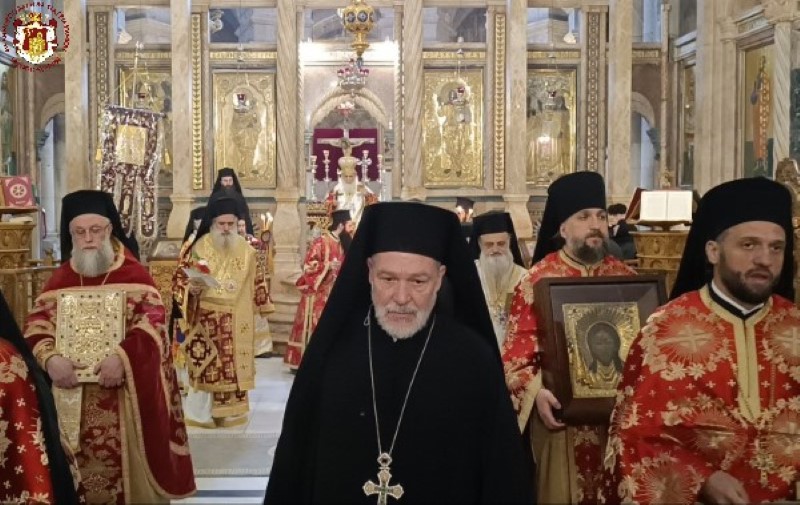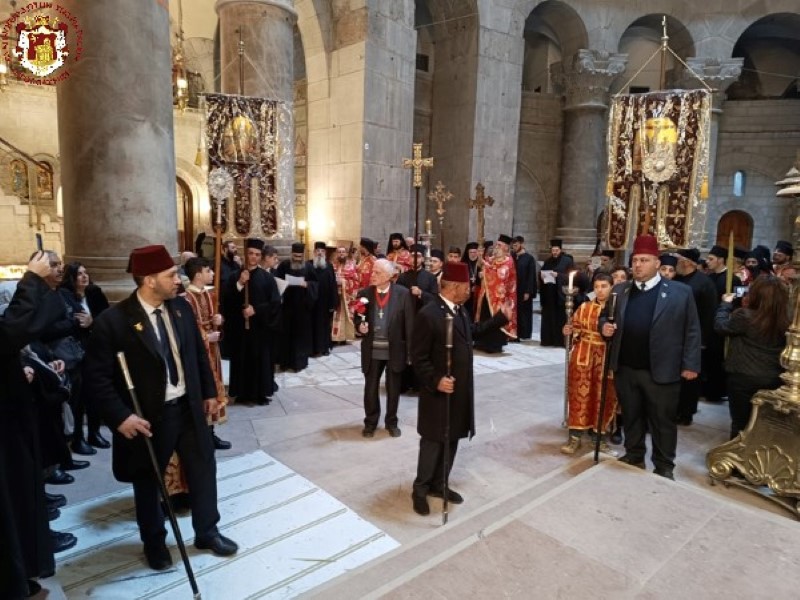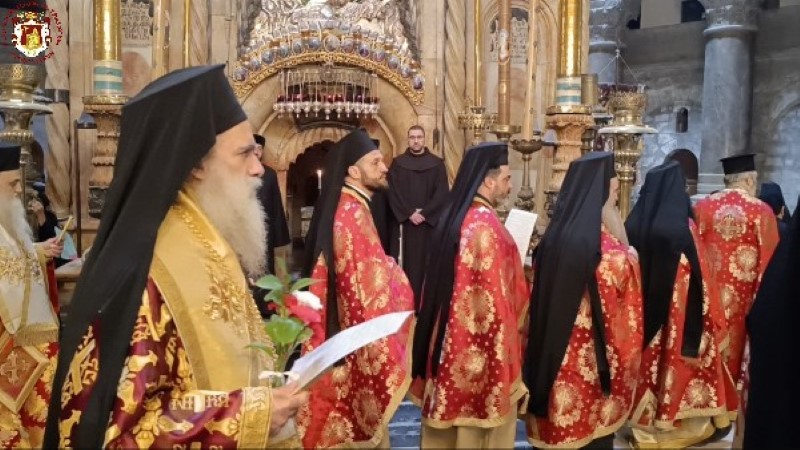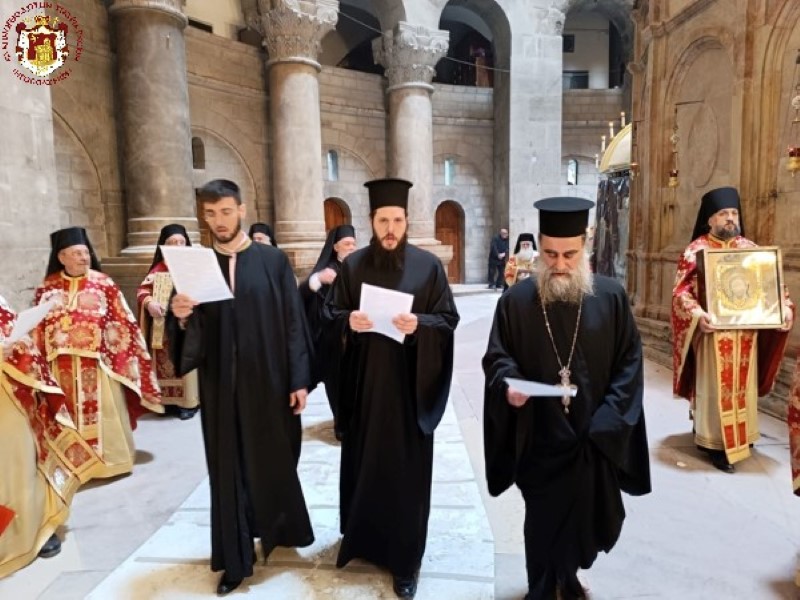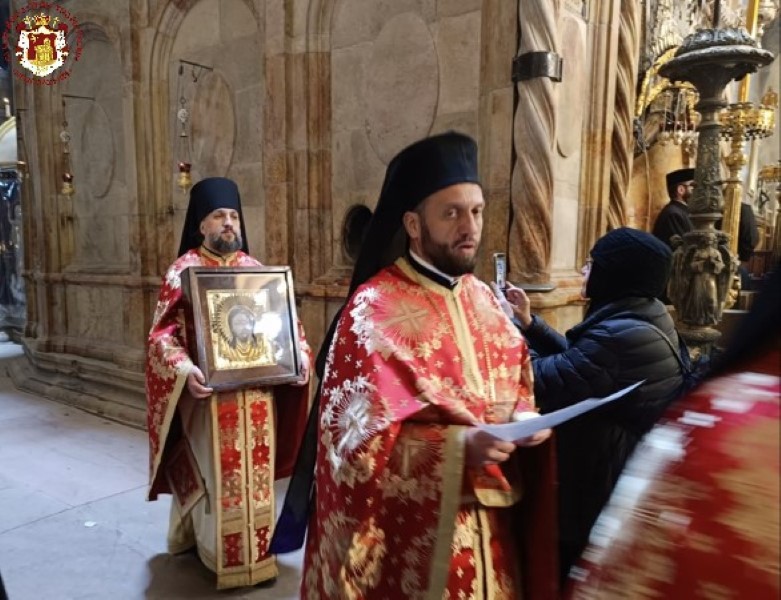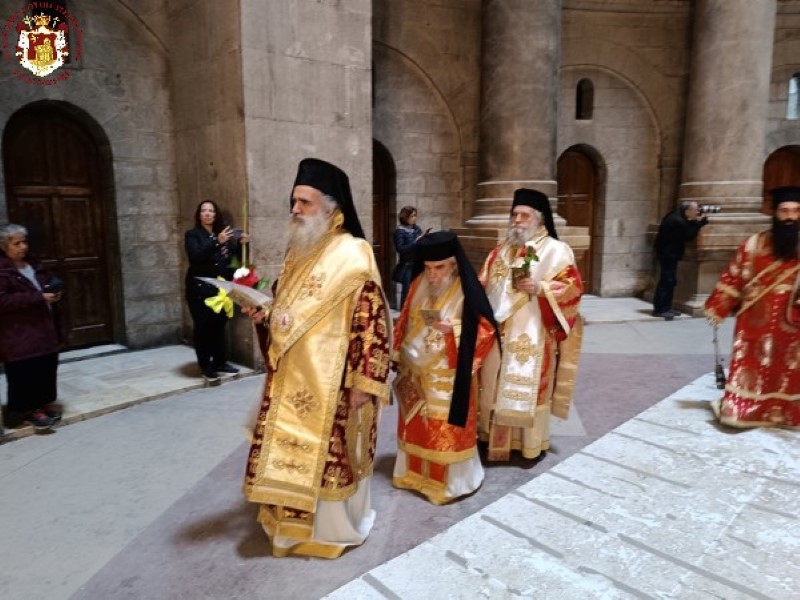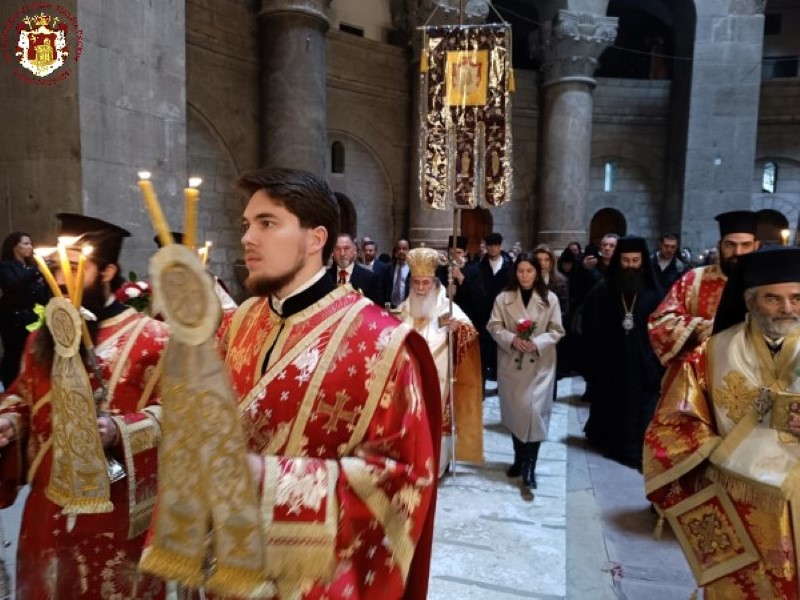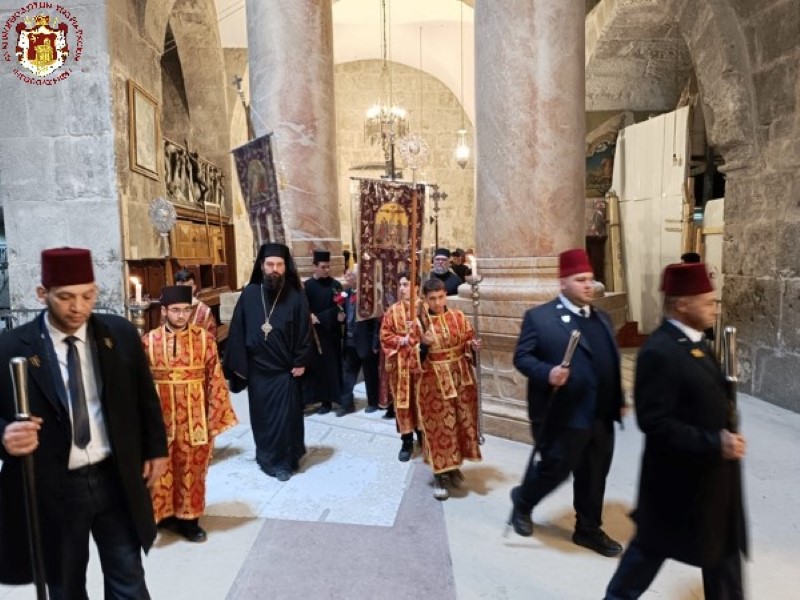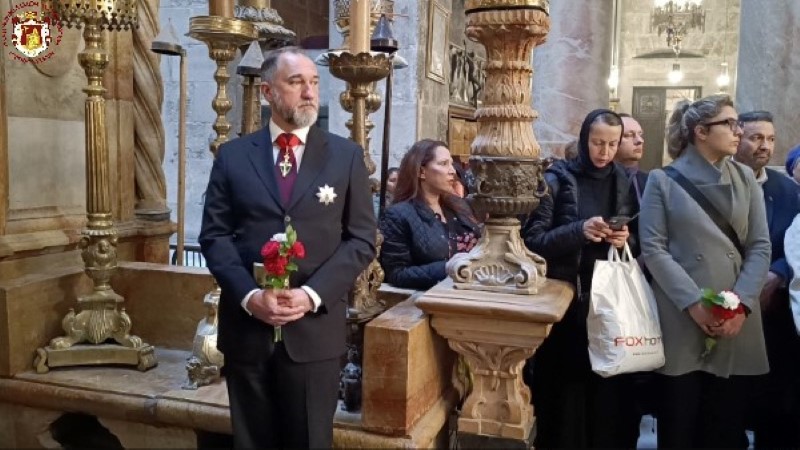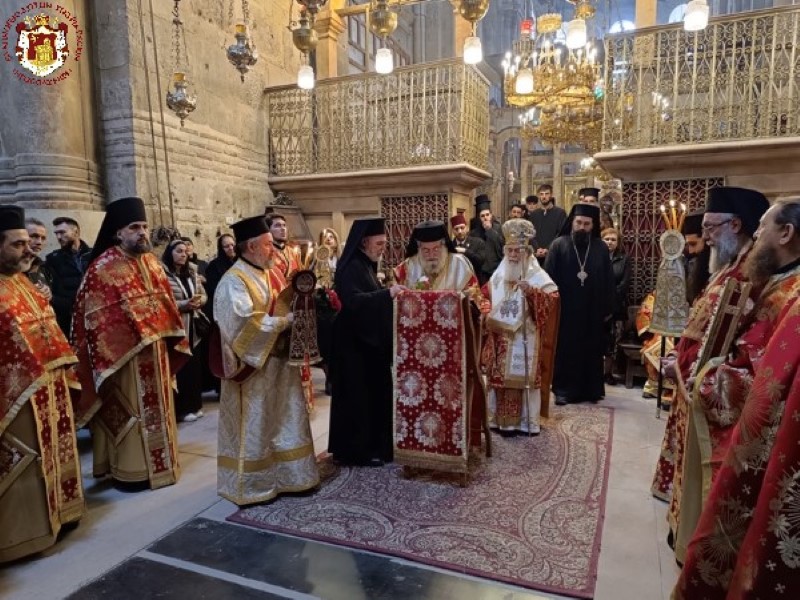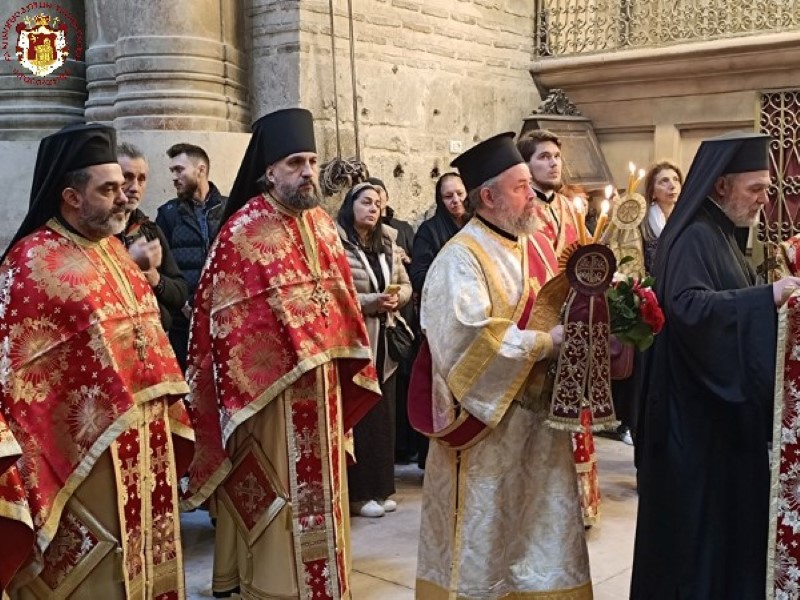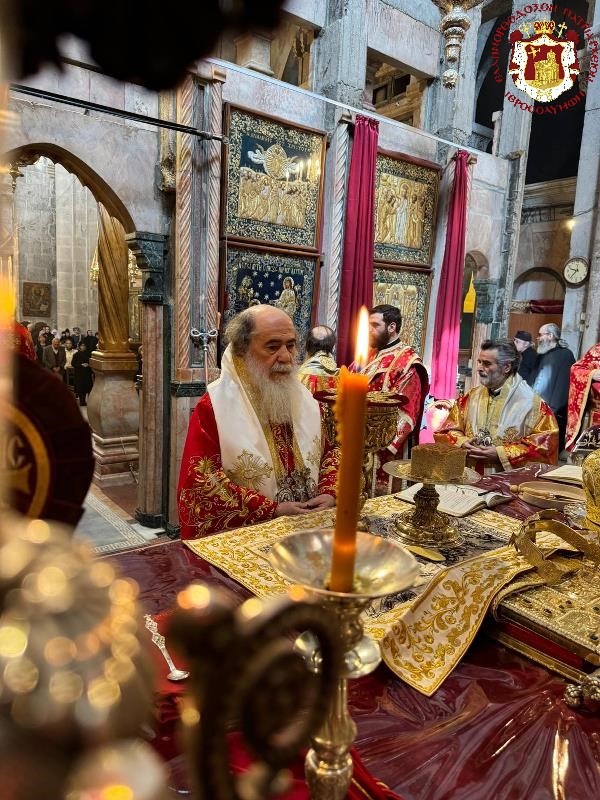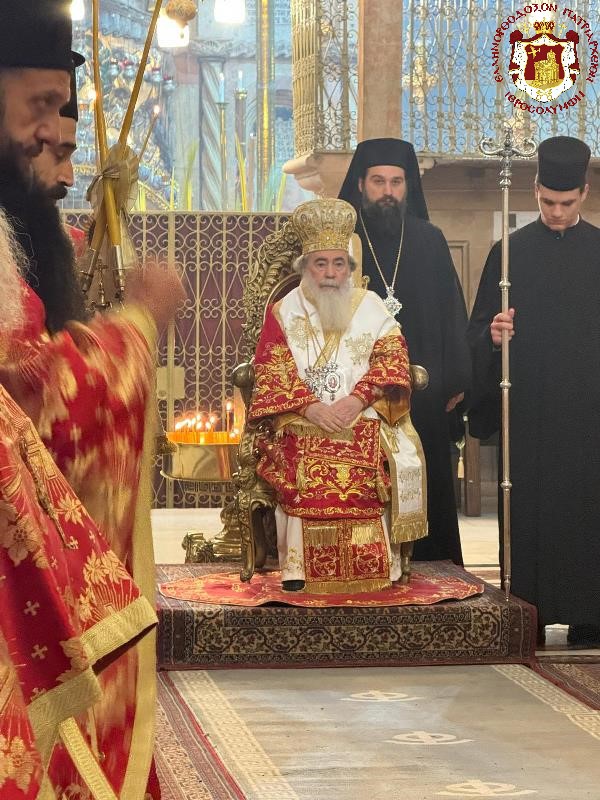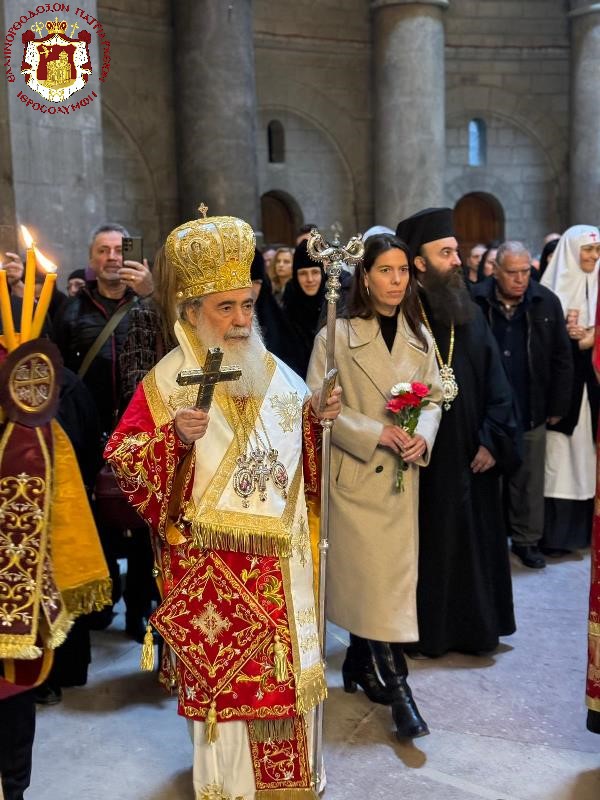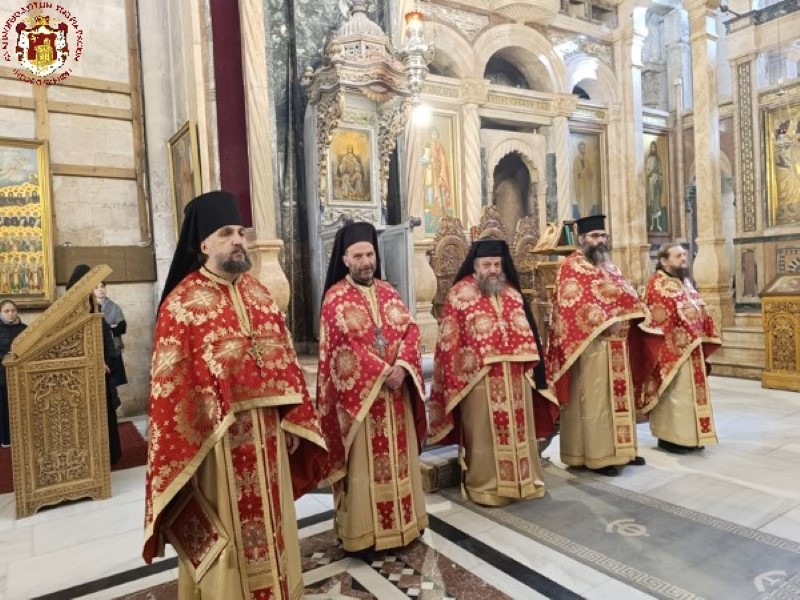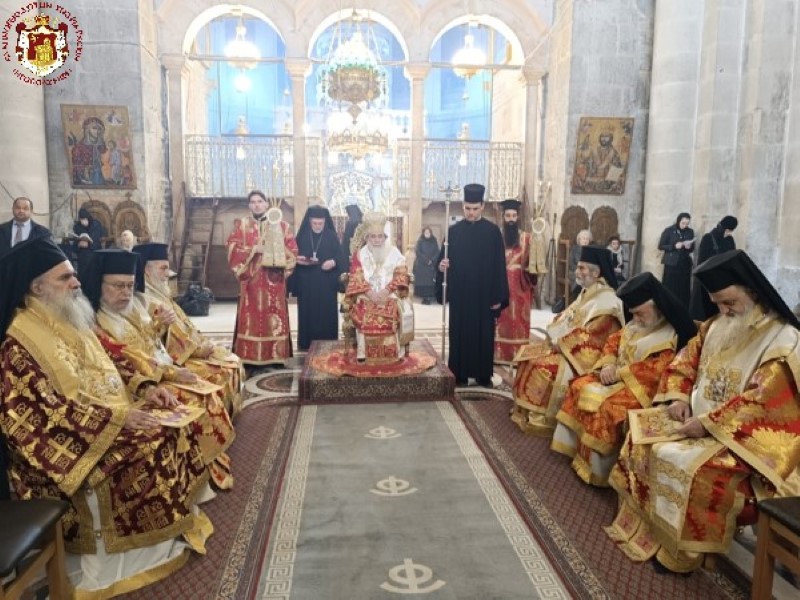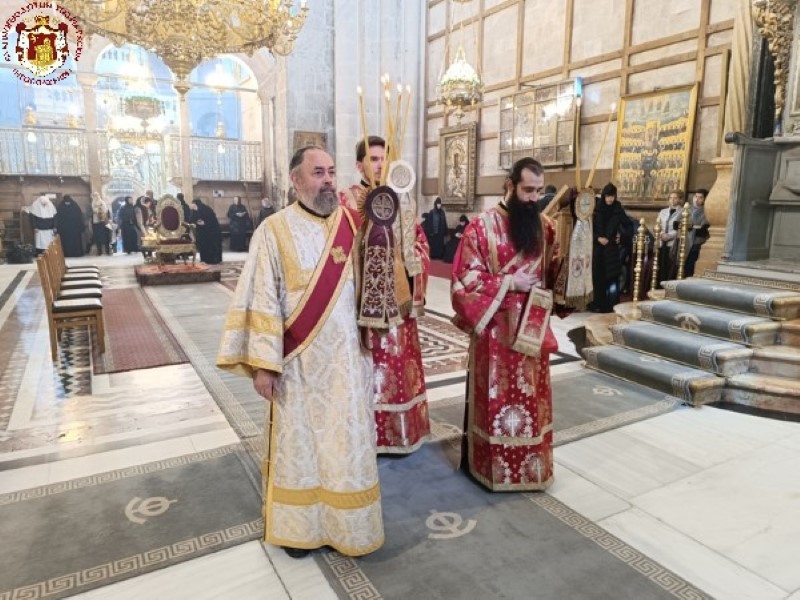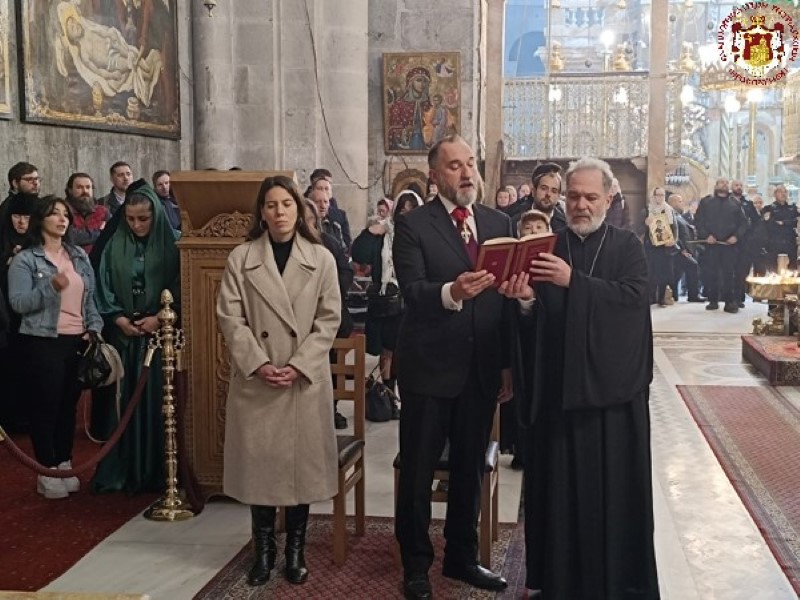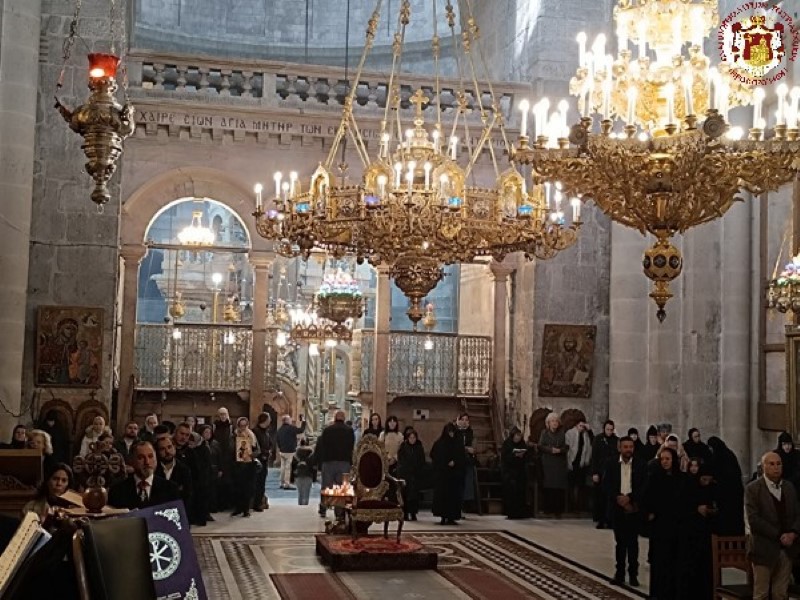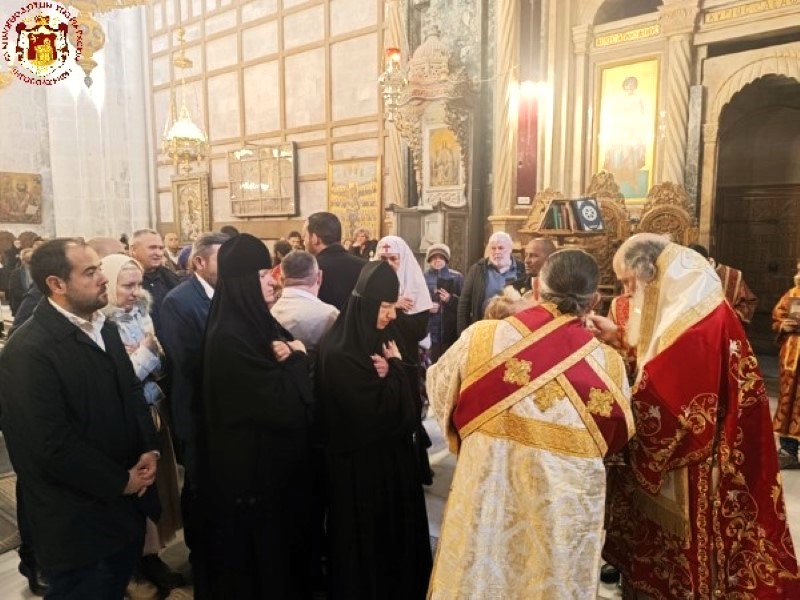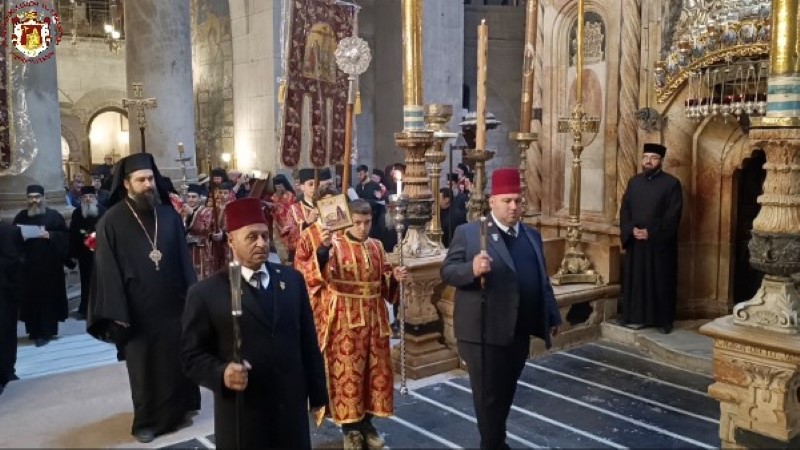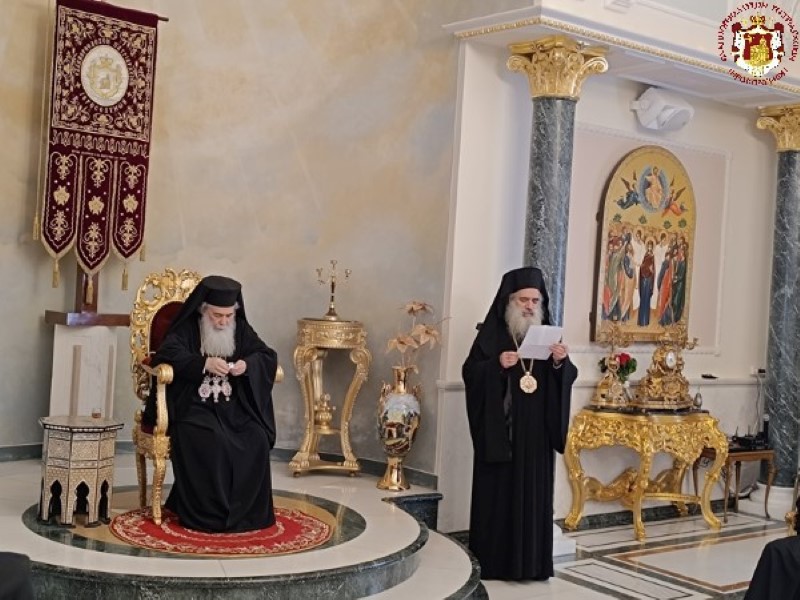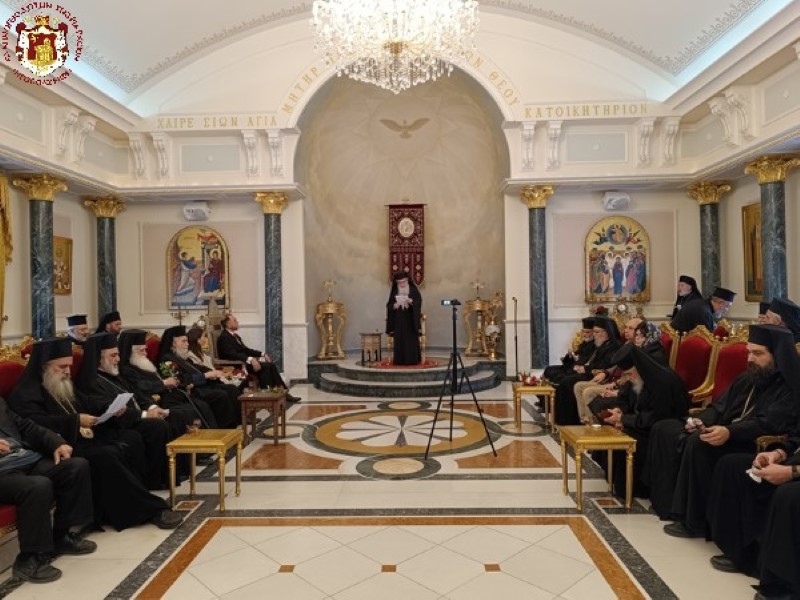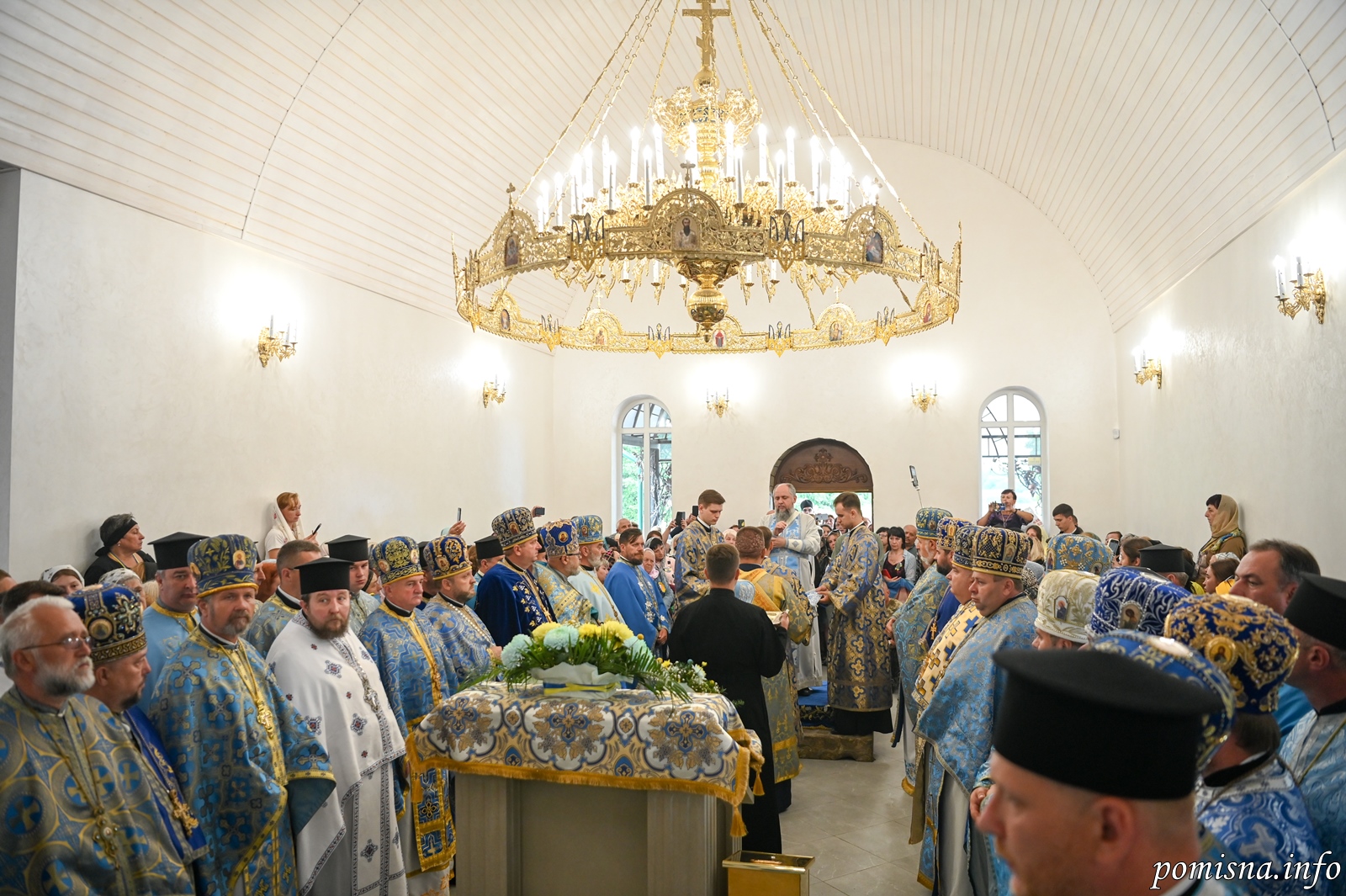The Sunday of Orthodoxy at the Patriarchate of Jerusalem
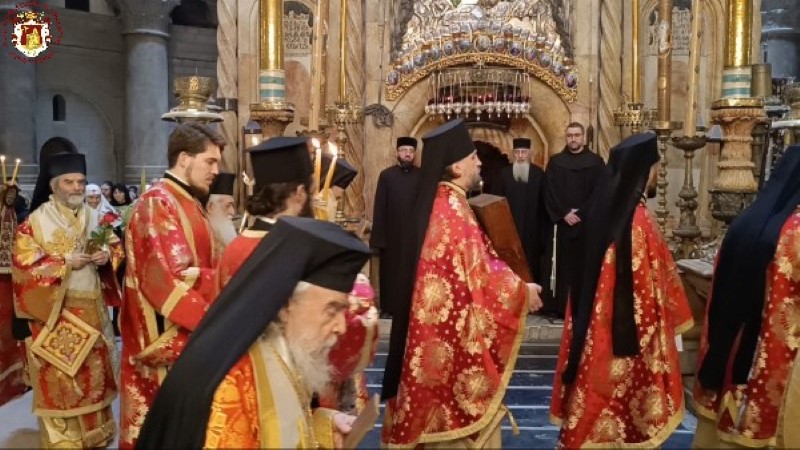

The Sunday of the 11th / 24th of March 2024 was celebrated by the Patriarchate as the first Sunday of Lent and as the Sunday of Orthodoxy, that is, as a memory of the restoration of the holy icons after more than a hundred years of unholy and impious persecution against them.
This feast was celebrated as a triumph of the icons due to their return to the Holy Churches by the Patriarch of Constantinople Methodios and the Empress Theodora and her son Michael. Empress Theodora asked God for forgiveness for her husband, Emperor Theophilos the fighter of the icons, through a litany. Since then, the Church unwaveringly and undisturbedly honours the holy icons as a certification and confirmation of the mystery of the incarnation of our Lord and God and Saviour Jesus Christ.
This true and redeeming event was celebrated in the Church of the Holy Sepulchre with Great Vespers on Saturday afternoon, which is called “parrhesia” and includes a reception and veneration at the Holy Deposition then at the Holy Sepulchre, and the Horrendous Golgotha, ringing of the church bells, incense offering around the shrines, Great Entry and blessing of bread. The service was presided over by His Beatitude Patriarch Theophilos of Jerusalem, with Hieromonks and deacons concelebrating, and faithful members of the Church of Jerusalem and a few pilgrims attending the prayer.
On Sunday morning the Divine Liturgy at the Catholicon of the Church of the Holy Sepulchre was officiated by His Beatitude with con-celebrants their Eminences, Metropolitan Isychios of Kapitolias, the Archbishops, Theophanes of Gerash, Aristarchos of Constantina, Theodosios of Sebasteia, Dimitrios of Lydda, the Elder Kamarasis Archimandrite Nectarios and other Holy Sepulchre Hieromonks, the representative of the Church of Russia Archimandrite Vassianos, the representative of the Church of Romania Archimandrite Theophilos, Archdeacon Mark and Hierodeacons Eulogios and Dositheos. The chanting was delivered by Hierodeacon Simeon and Mr Eustathios Tsoumanis, at the honorary presence of the Consul General of Greece in Jerusalem Mr Dimitrios Angelosopoulos and the Ambassador of Georgia Mr Zaza Kandelaki.
After the Divine Liturgy, there was a litany, three times around the Holy Sepulchre and the shrines.
At the end of the litany, the Synod of Orthodoxy was read in front of the Holy Sepulchre for the blessed memory of Patriarch Methodius, Empress Theodora and her son Michael and all the Patriarchs and Priests and Emperors, patrons of the saints and venerable icons, venerated not religiously but relatively speaking, as defined by the Canons of the Church and for the condemnation of all those fighting against the Holy icons.
After the Dismissal of the Divine Liturgy, the full congregation returned to the Patriarchate Hall, where His Beatitude Patriarch Theophilos of Jerusalem addressed those present as follows:
“The uncircumscribed Word of the Father became circumscribed taking flesh from thee, O Theotokos and He has restored the sullied image to its ancient glory, filling it with the divine beauty. This our salvation we confess in deed and word, and we depict it in the holy icons” (Triodion, Matins, Kontakion), the hymnographer says.
Today, the first Sunday of Lent, the Holy Church of Christ celebrates the commemoration of the restoration of the holy icons, by the late Sovereigns of Constantinople Michael and his mother Theodora, during the Patriarchal Office of the Saint and Confessor Methodius.
A hundred years and more, the persecution against the use and veneration of icons by the wicked emperors Leo of Isauros and Theophilos, husband of the pious empress Theodora, devastated the Church of Christ.
The veneration of the Holy icons of Christ, the Theotokos, the Angels and the Saints is a doctrine of the Orthodox faith and theology, formulated by the Seventh Ecumenical Council in Nicaea of Bithynia in 787. This doctrine derives from the fundamental doctrine of the incarnation of the second person of the Holy Trinity. The icon of our Saviour Jesus Christ is an irrefutable testimony of the true incarnation of the Word of God.
St. John of Damascus, the pre-eminent theologian of the image of Christ, also refers to Basil the Great and says: “From the beginning, God created man in His image. Whom, then, do we worship each other, if not as created in the image of God? As Basil the Great said, “the honour of the icon is attributed to the prototype”. The original is what is depicted, from which the derivative is made. And again, the Holy Father John of Damascus questions himself: “Of the invisible and incorporeal and indescribable and formless God, who can create an image? It is an extreme insanity and impiety to give shape to the divine… Then God, by His infinite mercy, truly became a man for our salvation… but also in the essence of a man, He lived on earth “and he was acquainted with men” (Baruch 3.38), he worked miracles, he suffered, he was crucified, he rose, he was ascended in the heavens… and he was seen by men, he was written, (i.e. depicted) for our remembrance and teaching”.
This event of the restoration of the icons, which we solemnly celebrated today in the Church of the Holy Sepulchre, was recognized as a triumph of Orthodoxy over false doctrines. Therefore, let us also hear the hymnographer singing and saying: “Celebrate with a feast the Christ-named people of the Lord, seeing the Church shining again the beauty of the divine form, as God was clothed in it, as a man to save us”.
We pray that the beauty of the divine form shines in the hearts and minds of those who govern the earth. Amen, many and peaceful returns”.
From Secretariat-General
Source: Patriarchate of Jerusalem
